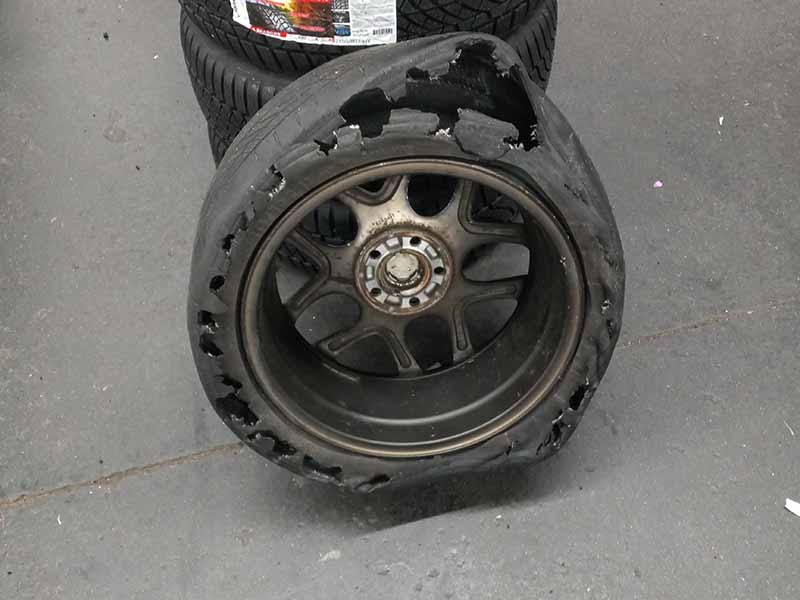When you hear a loud pop and suddenly feel your car veering off course, it’s likely you’ve experienced a tire blowout. Understanding the causes of tire blowouts can be the difference between a regular commute and a roadside emergency.
Leading Cause Of Tire Failure
The leading cause of tire failure, including sudden blowouts, is under-inflation. Driving on underinflated tires can cause excessive stress and heat on tire sidewalls, leading to catastrophic failure at high speeds.
About one in four cars has at least one tire that is significantly underinflated and at serious risk for a blowout or failure.
In this article, we will explore the silent but dangerous risks of under-inflation, the importance of responding to TPMS warnings, and other potential causes of tire blowouts. We’ll provide you with straightforward advice and practical steps to ensure tire safety and prevent unexpected failures.
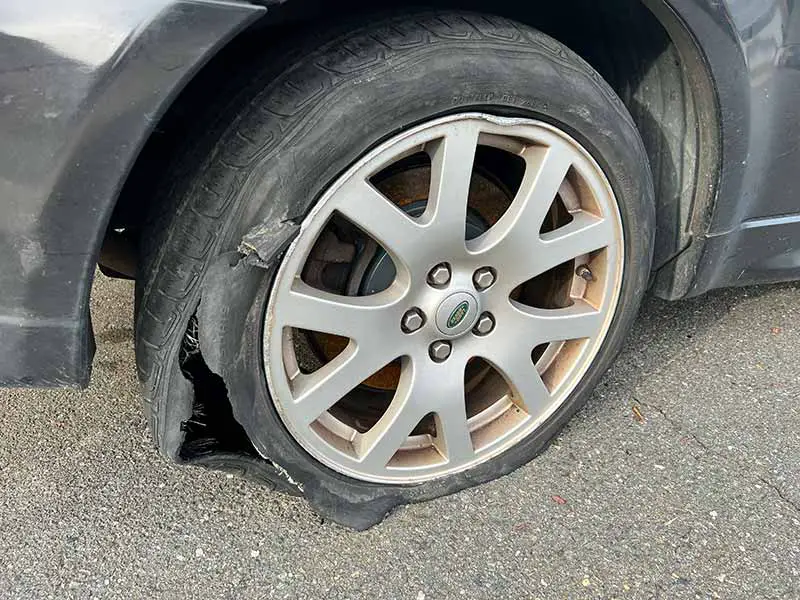
Understanding Tire Blowouts
Tire blowouts are a sudden, alarming event that can lead to loss of vehicle control and, potentially, accidents. So, what exactly is a tire blowout, and why does it happen? Let’s unpack this.
What is a Tire Blowout?
A tire blowout is the rapid deflation of a tire that occurs when it can no longer support the weight of the vehicle. It’s not a gradual leak but a sudden burst, often resulting in the tire being shredded and, in many cases, causing the driver to lose control of the vehicle. Imagine driving at highway speeds when suddenly, your tire is not a tire anymore — it’s a flailing piece of rubber that significantly compromises your vehicle’s stability.
Common Misconceptions
- Sudden and Unpredictable: Many think blowouts happen out of the blue. While sudden, they often result from ongoing issues like under-inflation, wear, or damage that have been ignored.
- Always Noisy: Blowouts are associated with a loud bang. However, some can occur more quietly, particularly if the tire tears apart gradually before fully giving way.
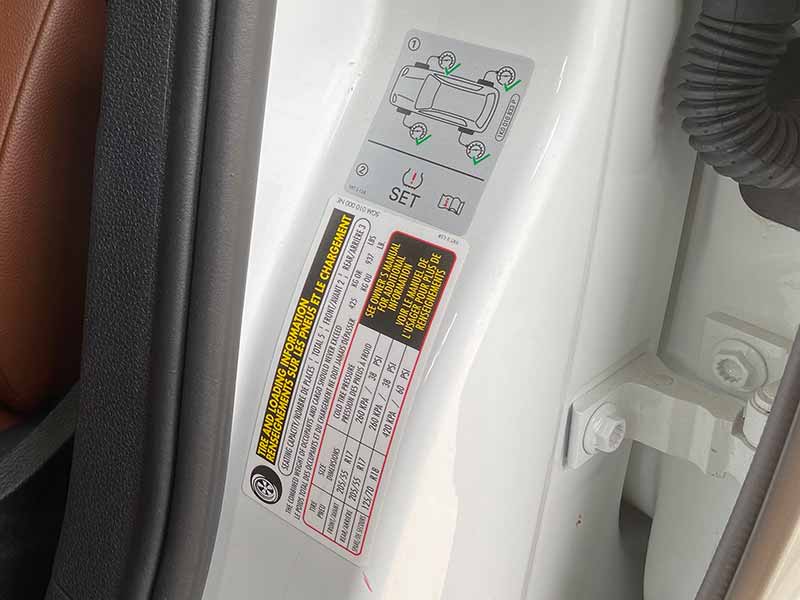
The Silent Culprit: Under-Inflation
Under-inflation is a leading cause of tire blowouts, yet it’s often overlooked as a minor inconvenience. Here’s why it’s anything but.
Importance of Proper Tire Pressure
- Optimal Performance: Properly inflated tires ensure the best vehicle handling, fuel efficiency, and tire longevity.
- Fuel Efficiency: Under-inflated tires require more energy to move, leading to increased fuel consumption.
- Extended Tire Life: Keeping tires inflated to the correct pressure helps them wear evenly, extending their service life.
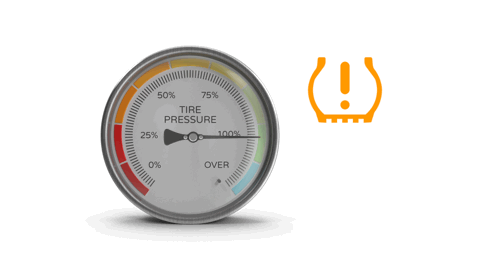
The Mechanics of Under-Inflation
When a tire is not adequately inflated, it can’t maintain its shape and becomes flatter than intended while in contact with the road. As a result:
- Increased Stress on the Sidewalls: The tire’s sidewalls are forced to flex more than they’re designed to. Over time, this flexing weakens the structure of the tire.
- Heat Buildup: The constant flexing generates heat, compounding the stress on the tire. At high speeds, this can lead to a catastrophic failure, aka a blowout.
The Role of TPMS: A Critical Safety Feature
Modern vehicles are equipped with a Tire Pressure Monitoring System (TPMS), which alerts the driver to significant under-inflation. While this system doesn’t replace regular tire pressure checks, it’s a crucial line of defense against driving on dangerously low tires. Here’s what drivers should know:
- Early Warning System: TPMS illuminates a warning light on the dashboard when tire pressure drops significantly below the manufacturer’s recommendation.
- Not a Replacement for Regular Checks: TPMS is an aid, not a substitute. Tire pressures should still be manually checked regularly, as TPMS might not alert the driver to slow leaks or minor under-inflation.
Ignoring TPMS Warnings: A Dangerous Oversight
The Tire Pressure Monitoring System (TPMS) is a critical safety feature in modern vehicles, yet its warnings are often ignored or misunderstood. Understanding the importance of this system and the risks of overlooking its alerts is crucial for safe driving.
What is TPMS?
TPMS stands for Tire Pressure Monitoring System, an electronic system designed to monitor the air pressure inside pneumatic tires. It alerts the driver when tire pressure falls below a certain threshold, usually 25% below the manufacturer’s recommendation. Here’s why it matters:
- Early Detection: TPMS alerts drivers to severe under-inflation, which can lead to tire failure if not addressed promptly.
- Preventive Measure: By alerting the driver to potential tire pressure issues, TPMS plays a critical role in preventing blowouts and other tire-related incidents.
The Risks of Ignoring TPMS
When the TPMS warning light illuminates, it’s tempting to ignore it, especially if the tire doesn’t appear flat. However, disregarding this alert can have severe consequences:
- Gradual Damage: Even if the tire isn’t visibly deflated, driving on a slightly under-inflated tire over time can cause irreversible damage, leading to blowouts.
- Compromised Safety: Under-inflated tires affect handling, braking, and fuel efficiency, making the vehicle less safe overall.
TPMS Sensor Failures
TPMS sensors can fail for several reasons, such as battery life depletion or physical damage. It’s important to know:
- Sensor Lifespan: Most TPMS sensors have a battery life of 5 to 10 years. As the vehicle ages, sensors may need to be replaced.
- Physical Damage: Sensors can be damaged by impact or during tire servicing. Regular checks can ensure they are functioning correctly.
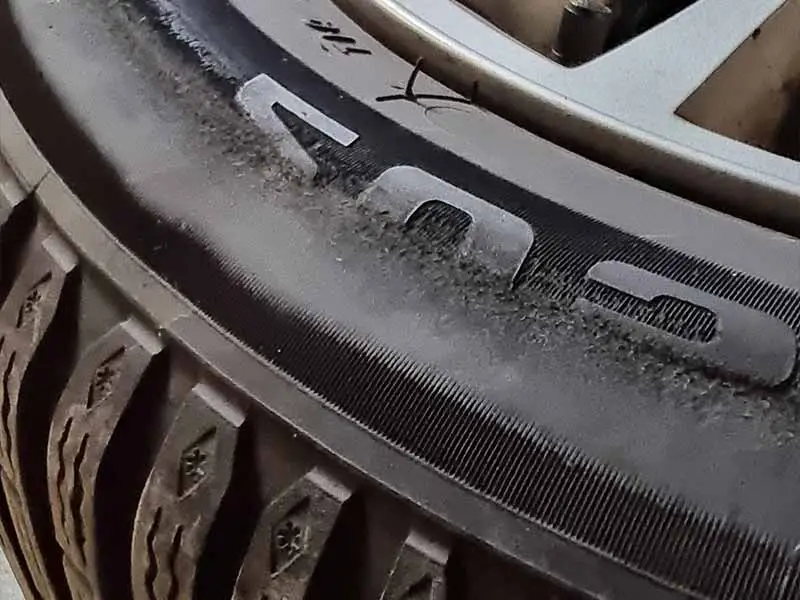
Other Potential Causes of Sudden Tire Blowouts
While under-inflation is a leading cause of tire blowouts, several other factors can also lead to this dangerous situation. Understanding these can help drivers take comprehensive care of their tires and avoid unexpected failures.
Road Hazards and Immediate Damage
- Debris and Obstacles: Sharp objects, potholes, or debris on the road can cause immediate tire damage leading to a blowout.
- Impact Damage: Hitting a curb or other obstacle can weaken the tire structure, especially the sidewalls, leading to a blowout later.
Overloading the Vehicle
- Excess Weight: Carrying weight beyond the vehicle’s maximum load capacity puts additional stress on the tires, increasing the risk of a blowout, especially in combination with other factors like heat or high speeds.
Tire Wear and Aging
- Tread Wear: Worn-out tires with diminished tread are more susceptible to blowouts. Regular checks can help identify when it’s time for a replacement.
- Aging: Tires degrade over time, even if they’re not used. Old tires, typically those over 6 years of age, are at a higher risk of failing.
Manufacturer Defects
- Recalls and Defects: Occasionally, tires are recalled due to manufacturing defects that may increase the risk of blowouts. Always check for recalls on your tire model.
Preventing Non-Inflation Related Blowouts
To avoid blowouts caused by these factors, consider the following preventive measures:
- Regular Inspections: Routinely check your tires for signs of damage, unusual wear patterns, or embedded objects.
- Load Management: Be mindful of your vehicle’s load capacity and avoid overloading it.
- Tire Replacement: Replace tires that are worn out or aged, even if they appear to be in good condition.
- Stay Informed: Keep an eye on recalls or notices from your tire manufacturer.
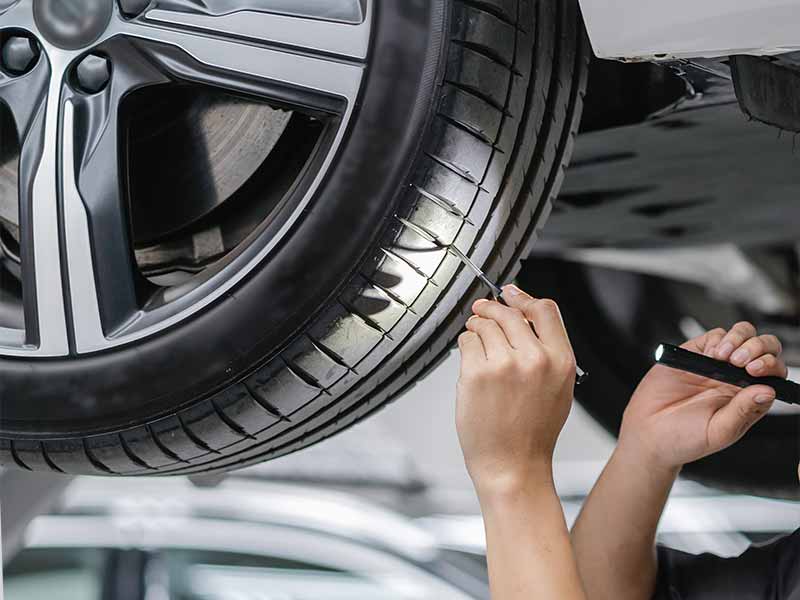
Preventive Measures and Safe Practices
To ensure road safety and prolong the life of your tires, it’s essential to adopt preventive measures and safe practices. Here are some strategies to help you avoid tire blowouts and maintain optimal tire health.
Regular Tire Pressure Checks
- Manual Checks: Even with a functioning TPMS, manually check your tire pressure regularly using a reliable gauge. Do this at least once a month and before long trips.
- Adjustment for Conditions: Remember that tire pressure can change with temperature fluctuations. Check more frequently in extreme weather conditions.
Responding to TPMS Alerts
- Immediate Attention: If your TPMS light comes on, address it as soon as possible. Check your tire pressure and inflate your tires to the recommended level.
- Sensor Maintenance: Ensure that your TPMS sensors are functioning correctly. Replace them if necessary, especially if they are older or have sustained damage.
Regular Tire Inspections and Maintenance
- Visual Checks: Regularly inspect your tires for signs of wear, cuts, bulges, or other damages. Don’t ignore minor issues; they can lead to bigger problems.
- Professional Inspections: Have your tires inspected by a professional regularly, especially if you notice any issues. They can spot problems that you might miss and recommend necessary actions.
Understanding and Managing Load
- Load Capacity: Always adhere to your vehicle’s load capacity. Overloading puts additional stress on your tires and can lead to blowouts.
- Even Distribution: Ensure that the load is evenly distributed across all tires to avoid uneven wear and additional stress on individual tires.
Upkeep and Replacement
- Timely Replacement: Replace your tires when they reach the end of their service life or if they show significant wear or damage.
- Quality Matters: Choose high-quality tires that are suitable for your vehicle and driving conditions. Consult with professionals to find the best options.
Resources
Below are some links you may find helpful when learning about tires
Final Thoughts
By regularly checking your tire pressure, responding promptly to TPMS alerts, and being aware of the various factors that can lead to tire blowouts, you are taking proactive steps towards ensuring your safety and prolonging the life of your tires.
While many factors can lead to tire failure, the most common and preventable one is under-inflation.
Good luck and happy motoring.
